
The Bristol Pegasus is a British nine-cylinder, single-row, air-cooled radial aero engine. Designed by Roy Fedden of the Bristol Aeroplane Company, it was used to power both civil and military aircraft of the 1930s and 1940s. Developed from the earlier Mercury and Jupiter engines, later variants could produce 1,000 horsepower (750 kW) from its capacity of 1,750 cubic inches by use of a geared supercharger.

The Bristol Mercury is a nine-cylinder, air-cooled, single-row, piston radial engine. Designed by Roy Fedden of the Bristol Aeroplane Company it was used to power both civil and military aircraft of the 1930s and 1940s. Developed from the earlier Jupiter engine, later variants could produce 800 horsepower (600 kW) from its capacity of 1,500 cubic inches by use of a geared supercharger.
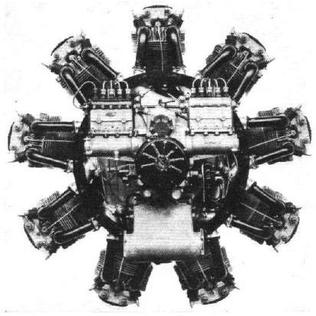
The Phoenix was an experimental version of the Bristol Aeroplane Company's Pegasus engine, adapted to run on the Diesel cycle. Only a few were built between 1928 and 1932, although samples fitted to a Westland Wapiti held the altitude record for diesel-powered aircraft at 27,453 ft from 11 May 1934 until World War II. The primary advantage of the Phoenix was better fuel efficiency at cruise, by up to 35%.

The Bristol Perseus was a British nine-cylinder, single-row, air-cooled radial aircraft engine produced by the Bristol Engine Company starting in 1932. It was the first production sleeve valve aero engine.

The Kestrel or type F is a 21 litre 700 horsepower (520 kW) class V-12 aircraft engine from Rolls-Royce, their first cast-block engine and the pattern for most of their future piston-engine designs. Used during the interwar period, it provided excellent service on a number of British fighters and bombers of the era, such as the Hawker Fury and Hawker Hart family, and the Handley Page Heyford. The engine also sold to international air forces, and it was even used to power prototypes of German military aircraft types that were later used during the Battle of Britain. Several Kestrel engines remain airworthy today.
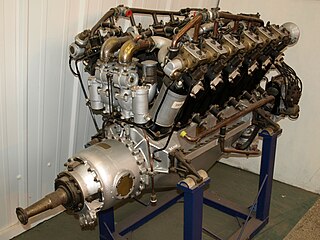
The Rolls-Royce Falcon is an aero engine developed in 1915. It was a smaller version of the Rolls-Royce Eagle, a liquid-cooled V-12 of 867 cu in capacity. Fitted to many British World War I-era aircraft, production ceased in 1927. The Falcon was designed by R.W. Harvey-Bailey.

The Rolls-Royce Condor aircraft piston engine was a larger version of the Rolls-Royce Eagle developing up to 675 horsepower (500 kW). The engine first ran in 1918 and a total of 327 engines were recorded as being built.

The Armstrong Siddeley Jaguar was an aircraft engine developed by Armstrong Siddeley. The Jaguar was a petrol-fuelled air-cooled 14-cylinder two-row radial engine design. The Jaguar III was first used in 1923, followed in 1925 by the Jaguar IV and in 1927 by the Jaguar VI. In 1925 the Jaguar became the first production aero engine incorporating a geared supercharger.

The Armstrong Siddeley Lynx is a British seven-cylinder aero engine developed by Armstrong Siddeley. Testing began in 1920 and 6,000 had been produced by 1939. In Italy Alfa Romeo built a 200 horsepower (150 kW) licensed version of this engine named the Alfa Romeo Lynx.
The Bristol Draco was an air-cooled nine-cylinder radial engine from the British manufacturer Bristol Aeroplane Company. It was essentially a version of their famous Pegasus converted to use a fuel injection system.

The Wolseley Viper is a British-built, high-compression derivative of the Hispano Suiza HS-8 liquid-cooled V-8 engine, built under licence by Wolseley Motors during World War I.

The Armstrong Siddeley Genet Major is a British five-cylinder, air-cooled, radial engine for aircraft, designed and built by Armstrong Siddeley and first run in 1928. It developed 140 horsepower (104 kW). In Royal Air Force use the seven-cylinder version was known as the Civet I. The Feliform names used are in line with company convention, the Genet and Civet both being large cat-like carnivores.
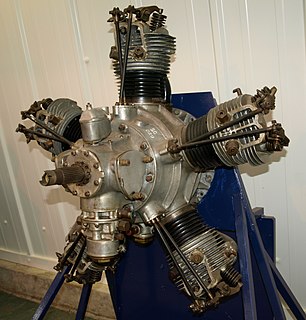
The Armstrong Siddeley Genet was a five-cylinder, air-cooled, radial engine for aircraft use built in the UK, first run in 1926. It developed 80 hp at 2,200 rpm in its final form and was a popular light aircraft powerplant. Following the company tradition with a slight deviation the engine was named after the Genet, a catlike animal of the same order but different family.
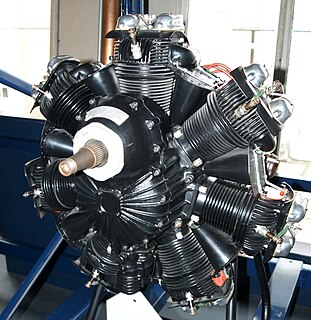
The Pobjoy Niagara is a British seven-cylinder, air-cooled, radial, aero-engine first produced in 1934. The design ran at higher speeds than conventional engines, and used reduction gearing to lower the speed of the propeller. This led to a noticeable off-centre mounting for the propeller. The Niagara was a popular engine for light and experimental aircraft, well regarded due to its small diameter, smooth operation, low noise and innovative engineering.
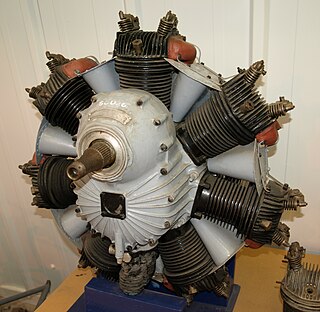
The Pobjoy R is a British seven-cylinder, radial, air-cooled, aircraft engine designed and built by Pobjoy Airmotors. Introduced in 1926 it was a popular engine for ultralight and small aircraft in the 1930s. A notable feature of the Pobjoy R was the propeller reduction gear which allowed the small engine to operate at more desirable higher speeds.

The Blackburne Thrush was a 1,500 cc three-cylinder radial aero-engine for light aircraft produced by Burney and Blackburne Limited. Burney and Blackburne were based at Bookham, Surrey, England and was a former motorcycle manufacturer.

The Armstrong Siddeley Ounce was a small two-cylinder aero engine developed by Armstrong Siddeley in 1920. The engine was originally conceived as a test piece but ran very well and was put into production for early ultralight aircraft and use in target drones. The Ounce used two cylinders from the preceding Jaguar I radial engine.
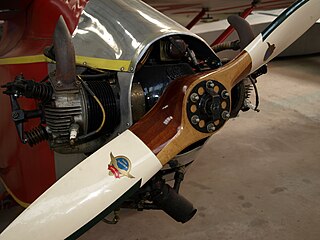
The ABC Scorpion is a 30 hp (22 kW) two-cylinder aero engine designed by British engineer Granville Bradshaw for use in light aircraft. The engine was built by ABC Motors Limited and first ran in 1921.
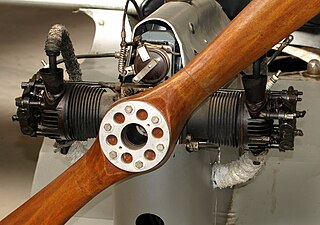
The ABC 8 hp is an 8 hp (6 kW) two-cylinder aero engine designed by the noted British engineer Granville Bradshaw for use in ultralight aircraft. The engine was derived from a specially tuned motorcycle unit and was built by ABC Motors, first running in 1923.
The ABC Gnat was a 45 hp (34 kW) two-cylinder aero engine designed by British engineer Granville Bradshaw for use in light aircraft. The Gnat was built by ABC Motors, first running in 1916, production ceased in December 1918. 17 engines were built from an original order of 18.


















